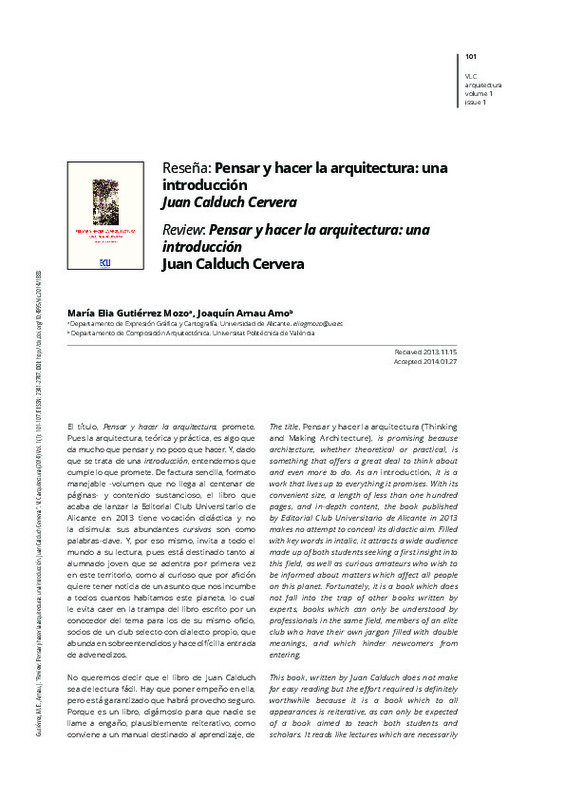JavaScript is disabled for your browser. Some features of this site may not work without it.
Buscar en RiuNet
Listar
Mi cuenta
Estadísticas
Ayuda RiuNet
Admin. UPV
Pensar y hacer la arquitectura: una introducción. Juan Calduch Cervera
Mostrar el registro completo del ítem
Gutiérrez Mozo, ME.; Arnau Amo, J. (2014). Pensar y hacer la arquitectura: una introducción. Juan Calduch Cervera. VLC arquitectura. Research Journal. 1(1):101-107. https://doi.org/10.4995/vlc.2014.1883
Por favor, use este identificador para citar o enlazar este ítem: http://hdl.handle.net/10251/39134
Ficheros en el ítem
Metadatos del ítem
| Título: | Pensar y hacer la arquitectura: una introducción. Juan Calduch Cervera | |
| Autor: | Gutiérrez Mozo, María Elia Arnau Amo, Joaquín | |
| Entidad UPV: |
|
|
| Fecha difusión: |
|
|
| Resumen: |
[EN] The title, Pensar y hacer la arquitectura (Thinking and Making Architecture), is promising because architecture, whether theoretical or practical, is something that offers a great deal to think about and even more to ...[+]
[ES] Reseña del libro Pensar y hacer la arquitectura: una introducción, cuyo autor es el profesor de la Universidad de Alicante Juan Calduch Cervera (Editorial Club Universitario, Alicante, 2013). Se trata de un manual ...[+]
|
|
| Palabras clave: |
|
|
| Derechos de uso: | Reconocimiento - No comercial (by-nc) | |
| Fuente: |
|
|
| DOI: |
|
|
| Editorial: |
|
|
| Versión del editor: | https://doi.org/10.4995/vlc.2014.1883 | |
| Tipo: |
|








